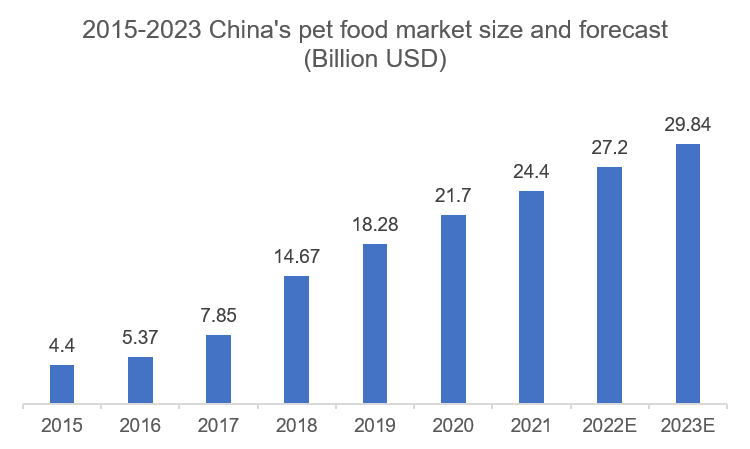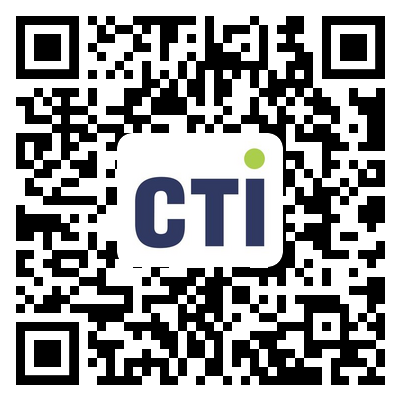Driven by an increase in disposable income amongst both the single and ageing population, the scale of pet ownership has markedly increased, driving the growth of the pet industry. Pet food is currently the largest market segment within the pet industry, and it’s rigid demand and high-frequency consumption make it a lucrative market to enter.
According to data, the scale of China’s pet food industry is approximately 24 billion USD in 2021, and it is expected to reach 27 billion USD within 2022.

Data from iiMedia Research
Quality issues often result from the variety of products that pet food manufacturers offer to keep up with demand. Due to the unique requirements within each product category, and the difficulty in implementing processes per each unique product, knowledge and process gaps can lead to quality risks. According to an analysis of FDA recall data in 2021, the majority of non-compliances in pet food on the market include excessive aflatoxin content, salmonella contamination, listeria contamination, and oil oxidation occurring within the declared product shelf life.
Shelf life is an assurance made by a company to consumers that within the defined period, the product is completely fit for consumption. While manufacturers have the largest influence on pet food safety, it is the distributor and seller that carries the risk of non-compliant product. The period of shelf life therefore needs to be verified independently so as to reduce the risk of product recalls, legal disputes, and product waste, and so the product life cycle can be properly determined.
Part 1
Factors Affecting Shelf Life
Let’s look closer at the process of determining the shelf life of pet food, noted that the observations and durations will vary per product. When pet food deteriorates the changes of product quality is mainly manifest in sensory quality, nutritional value, and safety indicators – such as microbiological content. After determining the key factors affecting the shelf life in your specific product, and the level of change observed via independent testing, we can then safely determine an appropriate shelf life. Furthermore, once those factors are well understood – we can then take measures to control and minimize those factors during food processing, preservation, and packing; so as to ensure the product delivers on its shelf-life promise.
Part 2
How to determine the shelf life
01
Below we will look at some of the applicable test methods for determining shelf life:
1) Accelerated Destruction Test: The sample is placed in an environment where one or more external factors such as temperature and humidity are higher than normal levels, so that the sample can reach the deterioration end point within a shorter than normal deterioration time period. Then, through regular sample collection and testing, the data in the deterioration process is analyzed and the shelf life of the product is calculated according to the expected storage environment parameters. The benefit of this test is that it provides results in a shorter timeframe, though is less precise.
2) Long-term stability test: By simulating the actual temperature, humidity, light and other environmental conditions parameters in the process of storage, transportation, sales, and consumption, the test plan and timelines for laboratory testing and sensory evaluation is reasonably set. The selected items are inspected at each point in time according to the actual product life cycle, and test indicators are observed to compare the changes between each stage of storage or transportation. The differences are then analyzed, and the unacceptable deterioration point of the product can then be determined. The end point is then established as the product shelf life. The benefits of this approach is precision and the inclusion of real-world scenarios, though the test duration is longer than an Accelerated Destruction Test.
02
Case Studies & Reference Law: Via external research on raw materials, processing or preservation technology, and other conditions, manufacturers can compare their products of the same type to products already existent in the market. While taking into account the relevant needs of consumers, the possible shelf life of the product can then be estimated. While ensuring speed-to-market, this approach carries the most risk. Therefore, once the product is put on the market, we recommend that the shelf life should be verified through scientific test methods; and if necessary, the shelf life should be adjusted.
Meet CTI’s Shelf-Life Project Team
CTI’s shelf-life project team have extensive experience in pet food shelf life verification. Through the analysis of pet food formulas, manufacturing processes, and food packaging methods, our teams will assist you in accurately identify the risk indicators that lead to changes in pet food quality, and developing science-based test plans for shelf-life and long term stability. Our approach is both scientific yet flexible in order to meet the unique demands of each manufacturer.
Our advantages:
❖ Extensive experience in shelf life projects.
❖ Expert identification of risk indicators in pet food products based on proprietary databases of existing products and product recalls.
❖ Technical services team to provide support for pet food shelf-life extension and quality improvement.
❖ Specialised laboratories fully accredited for shelf-life testing and independent verification.
Kind reminder:
As shelf-life testing requires a reasonable amount of time for determination, we recommend that you engage CTI’s services in advance of market distribution to ensure your products are compliant and ensure speed-to-market.











































 粤公网安备 44030602000441号
粤公网安备 44030602000441号